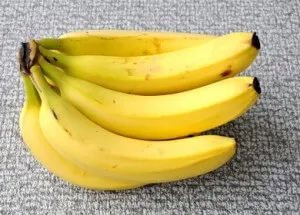We all know that the advice given for high blood pressure is to cut down on sodium. But very rarely are we told about how important increasing potassium intake really is.
Potassium is a mineral – an electrolyte – that balances the acidity and alkalinity in the body fluids and also helps to control blood pressure.
With the emergence of industrialized agricultural practices, the amount of potassium that humans consume has decreased significantly. At one time, humans ate a diet high in potassium and low in sodium, versus a diet that is now high in sodium and low in potassium.
With an increase in processed foods and less consumption of fruits and vegetables, many people suffer from a lack of potassium. Interestingly enough, in developing countries, where diets are not processed, high blood pressure is a rare occurrence.
Why is Potassium so Important?
Potassium controls the electrical activity of the heart, builds protein and helps to break down carbohydrates. Recent research indicates that a diet rich in potassium provides protection from heart disease, stroke, hypertension, kidney disease and even osteoporosis. In an epidemiological study of over 80,000 women, potassium was found to lower the risk of diabetes, as well.
A study performed at Harvard Medical School was published in “Hypertension” by St. George’s Medical School of London. This study compared the effectiveness of dietary potassium and potassium supplements in reducing blood pressure. According to the study, there were no differences between the two; dietary potassium was as effective as the supplements in reducing blood pressure.
How Much Potassium is Enough?
While U.S. governmental guidelines recommend that we get 4,700 mg of potassium per day, author and medical expert Dr. Steven G. Pratt suggests that we need more like 8,000 mg. However, if you suffer from kidney disease you will want to speak with your physician about possibly avoiding both sodium and potassium.
How Do I Know if My Potassium is Low?
The body gives us warning signs when our potassium levels drop dangerously low. This condition is known as hypokalemia. It is paramount to stay in tune with these warning signs and understand what they may mean. Four signs to watch for are:
- Weakness
- Low energy
- Irregular heartbeat
- Muscle cramps
Great Sources of Potassium

- Sweet Potato – 1 cup cooked – 950 mg potassium
- Butternut squash – 1 cup cooked – 582 mg potassium
- Figs – 4 large – 541 mg potassium
- Cantaloupe – 1 cup – 494 mg potassium
- Lentils – 1/2 cup cooked – 475 mg potassium
- Avocado – 1/2 medium – 439 mg potassium
- Bananas – 1 medium – 422 mg potassium
- Spinach – 2 cups raw – 334 mg potassium
- Blackberries – 1 cup 282 mg potassium
- Strawberries – 1 cup 252 mg potassium
- Almonds – 1 ounce raw – 198 mg potassium
-The Alternative Daily
Sources:
http://www.health.harvard.edu/fhg/updates/update0705c.shtml
http://www.umm.edu/altmed/articles/potassium-000320.htm
“Superfoods Health Style”; Steven G. Pratt M.D.
